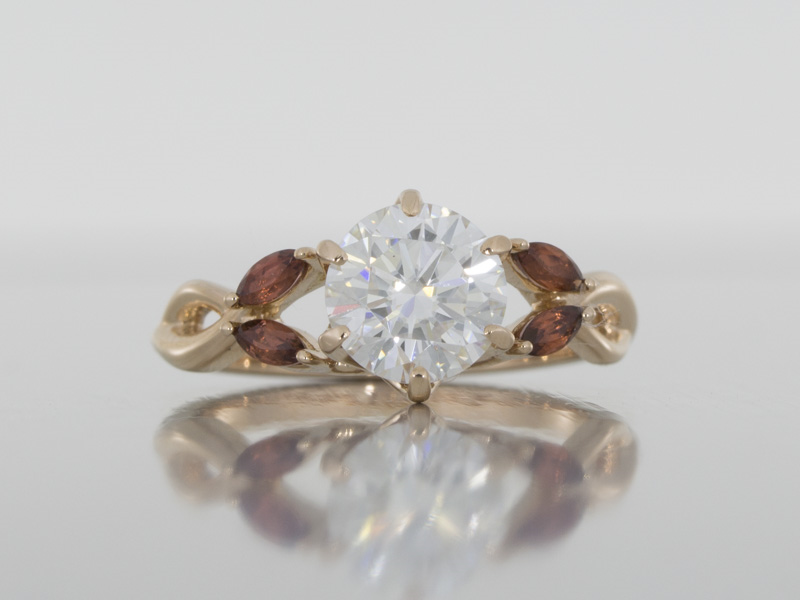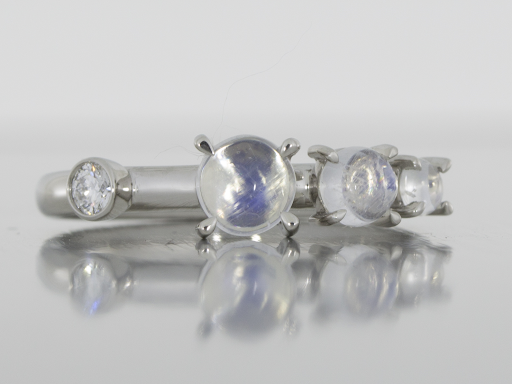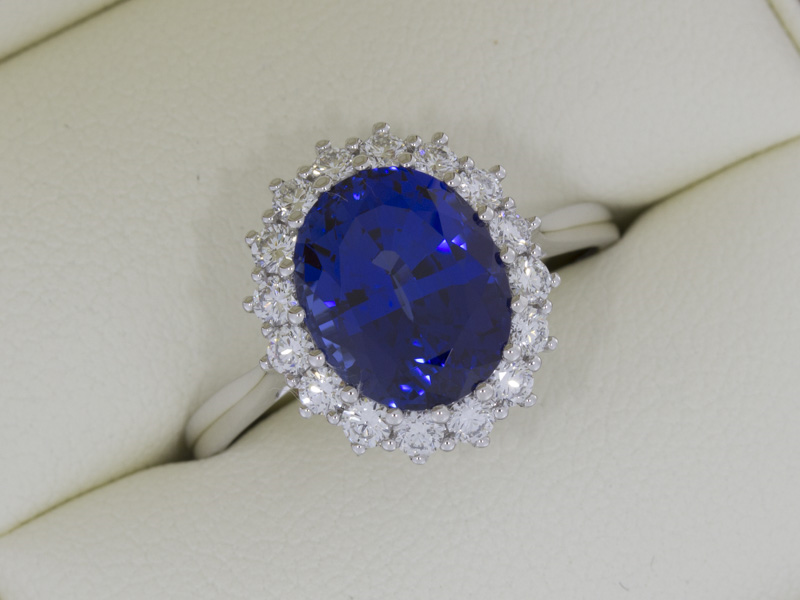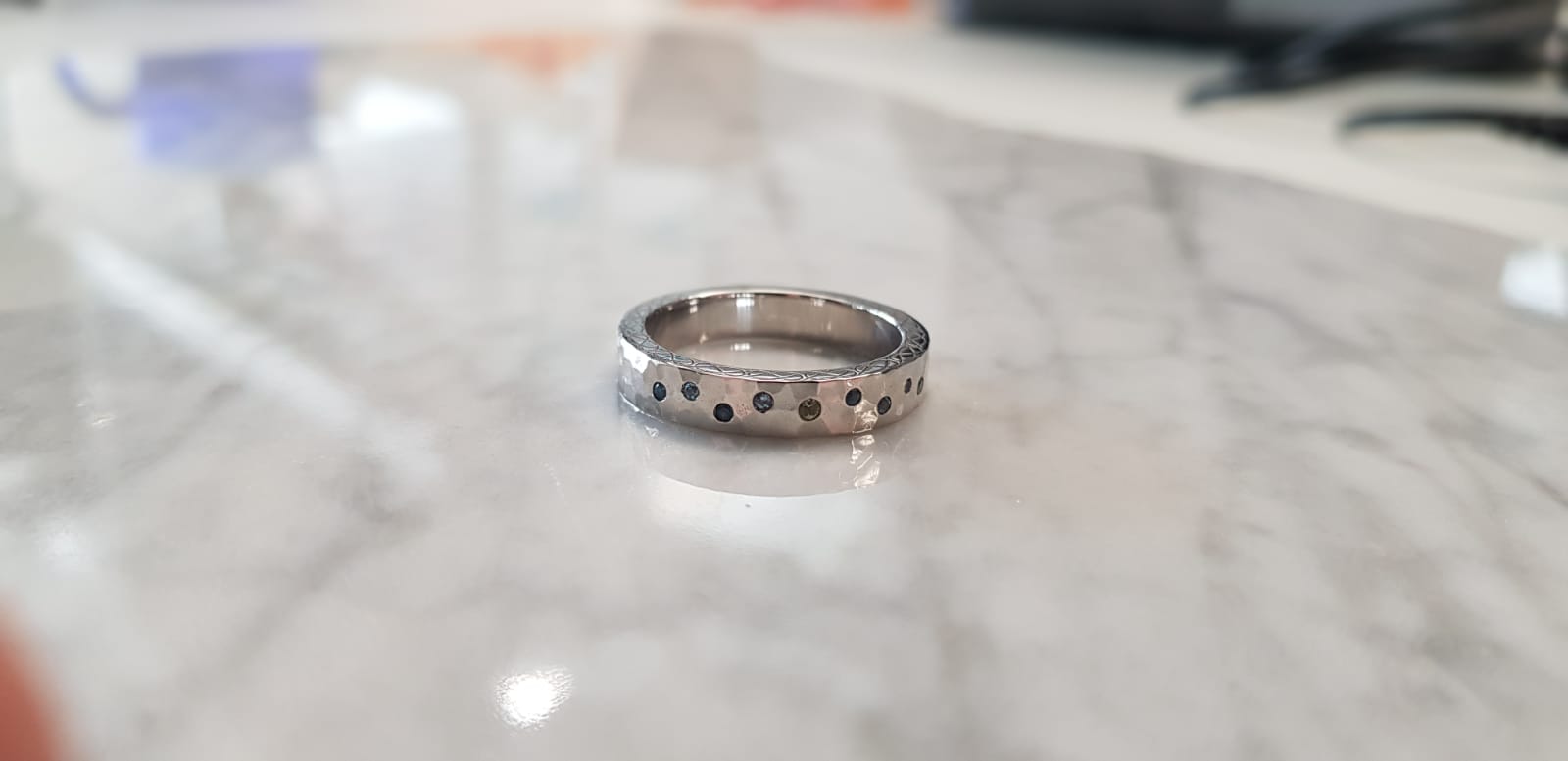There are all sorts of ways to make an engagement ring something really special. You might repurpose a family heirloom. You might trawl antique shops for a vintage wonder. Or you might look into birthstones – after all, how better to celebrate a life than to show that you want to share it? It seems like the perfect romantic gesture, with meanings on multiple levels. And it’s unique to you too, because aren’t diamonds a bit old hat? But there’s just one teensy problem: not all birthstones are durable.
The thing about engagement rings is that they will be worn. And worn and worn and worn. Hopefully every day, and hopefully for a very long time. This means that the stones will have to deal with a lot. They’ll be rubbed against clothes. Knocked against manifold objects numerous times a day. They’ll be run under hot and cold water. And, regardless of how careful the wearer is, they’ll come into contact with detergent on many occasions. While we think of gems as being solid rocks, many of them just aren’t able to cope with the rigours that the stone of an engagement ring will face. So, with more and more people looking for alternatives to diamonds, what other options are available?
How do you know if a birthstone will stand the test of time?
The answer to that question can be determined by consulting the Mohs Hardness Scale (MHS). When selecting a stone for your engagement ring, what you really want to know is whether it will last without scratching or abrasion. The MHS can help you with that, by giving numerical values to minerals, based upon their hardness and durability. So, for example, talc is given a number 1 ranking because it’s incredibly soft and easily damaged, while diamonds are extremely strong and resistant to damage, so their numerical value is 10.
Birthstones and their engagement ring suitability
January
January’s birthstone is the garnet. Although most commonly red, it does actually come in a range of colours. It’s meant to symbolise deep and lasting friendship, which is arguably a fantastic basis for any relationship. Unfortunately, it’s not that durable, only scoring around 7 on the MHS, so not ideal for everyday wear unless smaller, less prominent stones are used.
February
The amethyst is February’s birthstone. The rich purple hue has made it the stone of royalty throughout the centuries. Again, though, it’s MHS score is 7, meaning that it would be a poor choice for an engagement ring but could still make a wonderful celebration ring.
March
March has two birthstones – aquamarine and bloodstone. The bloodstone is meant to be a lucky charm, but it’s another 7 ranking. Aquamarine, traditionally believed to restore lost love and cure illness, is stronger, ranging from 7.5 to 8 on the MHS. If you can find a strong 8 stone, then it could do the job perfectly.
April
April is the month of the diamond – the stone of eternal love. As we already know, the diamond scores a perfect 10.
May
The emerald shines out as May’s birthstone, but for all their beauty and associations with luck, they’re best avoided as engagement stones. They do rank around 7.5 on the Mohs Hardness Scale, but frequently harbour miniscule cavities within their core, making them prone to shattering, so a design incorporating many smaller stones is a better idea than one large setting.
June
There are three birthstones for June:
Pearl – symbolising purity, generosity and strengthened relationships, pearls are unfortunately not very strong, only ranking 6-6.5 MHS. They still make beautiful rings, but not for everyday wear.
Alexandrite – historically, this stone has been a symbol of learning. It scores 8.5 on the MHS and is perfectly suited for an engagement ring. Its shifting colours also makes it an appealing choice.
Moonstone – alas, another 6 MHS ranking, the moonstone is beautiful and associated with fertility.
July
July is the month of the ruby. Rated 9 on the Mohs Scale, the ruby symbolises protection, prosperity, and passion, and is second only to the diamond when it comes to engagement rings.
August
Peridot, Sardonyx and Spinel are the stones of August. Although beautiful, the first two make poor engagement stones, rated only 7 MHS, so would need plenty of care. Spinel, however, is rated 8. It’s often viewed as a ‘poor-man’s ruby’, but it can look stunning if treated well.
September
Symbolising integrity, loyalty, sincerity, and nobility, the sapphire is September’s birthstone, and rated 9 on the MHS, it makes an ideal engagement ring.
October
October is another month with two stones: opal and tourmaline. The opal has long been associated with bad luck, and while that is no doubt groundless superstition, it still makes a very poor engagement stone, being rated around 6 MHS. While tourmaline has a better reputation, once being viewed as an amulet against evil, it’s still only 7 MHS, so not great for engagement rings intended to be worn everyday.
November
Topaz and Citrine are November’s stones. Topaz is meant to have curative properties, but its not great at protecting itself, being rated only 7 MHS. Citrine is stronger, with the beautiful blue healing stone rating 8, which makes it a possible engagement contender.
December
Finally, December has three stones:
Tanzanite – though gorgeous, this stone is relatively soft, receiving only a 6.5 rating.
Turquoise – this is another no-go, although once considered a stone of power, it is frequently only rated 5 MHS.
Zircon – rated 7.5 MHS, Zircon is the best bet for a December baby. Although still not strong, with care it can last well. It is associated with sleep and prosperity.
Whatever month your bride to be was born in, it’s possible to make a beautiful, bespoke ring that epitomises your relationship.
If you’d like us to help, please visit one of our studios, or give us a call: +44 (0)20 172 1723. We’d be delighted to help you.



















